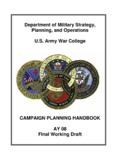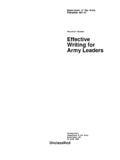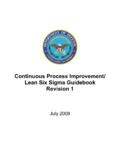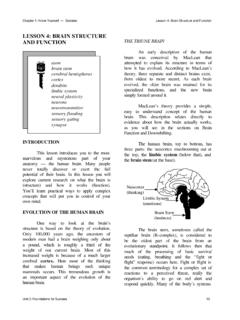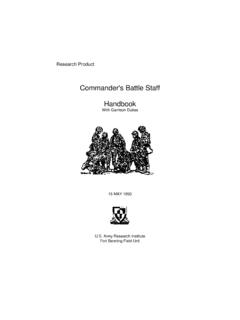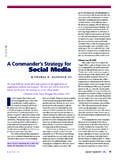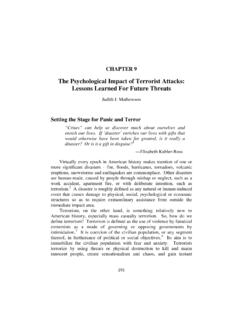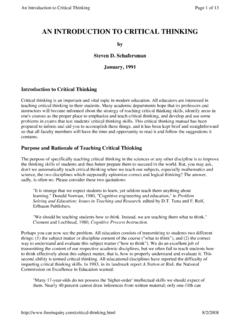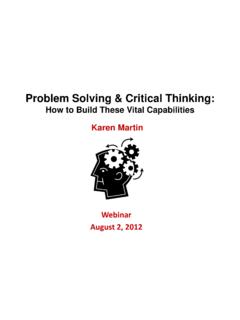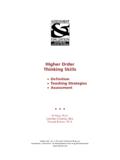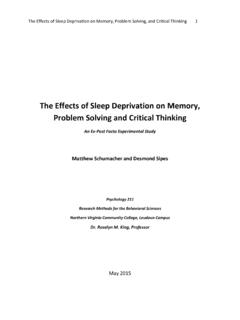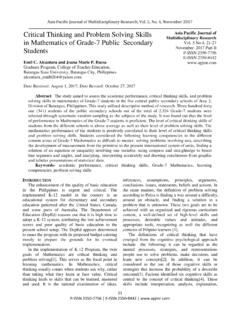Transcription of Background - Air University
1 97 AppendixnSA S critical thinking And StruCtured AnAlySiS ClASS SyllAbuS230 BackgroundTwenty-first Century intelligence issues involve uncertainty, mysteries, and risk. This differs from the 20th Century paradigms of security, secrets, and prevention. Analysis of current complex issues requires of its practitioners novel approaches including a productively imaginative process of inquiry. Questions an analyst asks not only serve as devices for attracting existing evidence, but also as devices for generating new evidence not presently considered. In this way, analysts more thoroughly examine complex issues and, aided by technology, are more likely to create novel intelligence and prevent strategic surprise. However, such reasoning is at odds with how people all people, including intelligence analysts naturally think.
2 Instead, people seek to confirm the first answer to a problem they discover, selectively using evidence to support that position even when there is compelling evidence that an alternative hypothesis may actually be the correct one. That people routinely fall prey to such poor thinking is well documented. Indeed, most commercial advertisers strive to take advantage of this. So do adversaries. One element of most intelligence failures includes poor thinking on the part of analysts poor thinking of which adversaries have taken advantage. So how can analysts avoid such thinking ?One solution is to teach intelligence analysts to think critically. 230 This syllabus has been developed and refined by the author through several years of teaching critical thinking at the National Security Agency s National Cryptologic School.
3 An early version of the course bore similarity to one developed by (then) MSGT Robert D. Folker, while a student at the (now) National Defense Intelligence College. Folker s course focused on the methods of analysis, not on the overarching critical thinking . His course (as written) is not taught at the college. 98 critical thinking provides structure to the reasoning process that identifies for analysts where they are likely to go astray. It offers a means for self-reflective reasoning that leads to improved thinking . If such thinking is aided by structured analytic techniques, then analysts will (and do) improve how they resolve issues with which they are confronted. The quality of their work critical thinking and analytic problem - solving course offers participants a chance to learn a paradigm for critical thinking and critically explore 14 different structured methods of analysis.
4 Texts by critical thinking experts Richard Paul and Linda Elder, and structured analysis experts Morgan Jones and Richards Heuer, as well as materials developed by the instructor, teach the concepts and techniques. Classroom problems as well as operational examples (introduced and developed by the students from their own work) reinforce and help transfer what is learned into the operational environment. A final project developed by student teams completes the formal to think critically and to solve problems in a structured manner requires active participation. The class requires 40 hours of classroom time, consisting of ten sessions of four hours each. The method of instruction is Socratic, demanding active classroom participation.
5 Participants also can expect homework, requiring both office and non-office time. Participants will prepare reading summaries for each class session, and develop one (or more) operational examples of at least one structured analytic method. Finally, participants work together on teams to complete classroom assignments and a final project dealing with an operational issue (employing at least five structured analytic methods). 99 Administration:Enrollment: Up to 21 Date/Time/Duration: One 4-hour class per day for 10 Location: : Yes, but hopefully not too odious. Operational examples are required. A team project is due at the end of the course. Texts: Elder, Linda, and Richard Paul. The Foundations of Analytic thinking : How to Take thinking Apart and What to Look for When You Do (Dillon Beach, CA: Foundation for critical thinking , 2003).
6 Heuer, Richards J., Jr. The Psychology of Intelligence Analysis (Washington, DC: Center for the Study of Intelligence, 1999), URL: < >, last accessed 15 March , Morgan D. The Thinker s Toolkit: Fourteen Skills for Making Smarter Decisions in Business and in Life (New York, NY: Crown Publishing Group, 1997).Several handouts (TBD) Objectives: The overall objective of the class is to enable you to critically think about analysis and what analysts are tasked to analyze. A second objective is to provide you with a set of analytic tools that are useful to your analysis. At the end of the class you will be equipped with a set of analytic skills and will have honed your critical thinking skills, allowing you to better function in the workplace.
7 Specifically, the course objectives are as follows: 100 Upon completion of this course you will be able to: Use critical thinking techniques to provide structure to your analytic reasoning. Identify, describe, and employ 14 methods for structured reasoning. Demonstrate critical thinking proficiency through lecture, classroom participation, and weekly homework assignments. Complete a final class assignment using a minimum of five structured analytic methods presented in this course. Apply knowledge of critical thinking by using a set of analytic tools designed to hone your skills as an other words, at the end of this 10-week-long class, you will have Learned to critically analyze intelligence-associated data, information, and evidence.
8 Honed your critical thinking skills. Built a toolbox of analytic and problem - solving methods. Become better example, when you approach a problem you will be able to Discover the true problem by restating and considering alternative outcomes. Have a variety of methods by which you can organize and make sense of the relevant Requirements: Written summaries of readings. (No more than one page per chapter assigned.) The summaries should answer exactly the questions on page five of the syllabus. The summaries should also include answers to the exercises in Morgan Jones book. The summaries will be typed unless prior arrangements have been made with the instructor. In-class discussions will draw heavily on the readings.
9 Problems from the work environment (Operational Exemplars). As we study the elements of reasoning and the methods of problem solving , we need operational examples 101 against which to apply/illustrate what we are learning. You will be responsible for providing at least one of those examples for the class to be presented during the week we discuss the method. The best exemplars may be saved for use in subsequent project. Working in teams of three or four, and using any problem Restatement and Divergent and Convergent thinking plus at least three other methods developed in the course for a total of of at least five methods you will develop an operational project to be presented at the last class. You will apply the elements of critical thinking to the method chosen as well as the specific problem , apply the appropriate methods to solve of problem , report the results, and evaluate the process.
10 The project will be presented during a 15 20 minute briefing. A list of the specific elements that must be included and the format by which the project is graded is on the last page of this : Written Summaries (25%). Due weekly. The first summary will be graded. Subsequently, a random number generator will be used to select three (3) additional summaries for grading. Grading will be based on the Universal Intellectual Standards in The Foundations of Analytic thinking and on whether instructions are followed. For example, if you are asked to identify what key questions an author is attempting to answer, it is expected that you will provide those questions in the reading summary. Class Participation (25%). Since this is a discussion course, you are expected to engage in the process.
